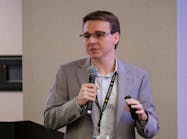Acelen adds stronger links to refinery’s value chain
The dog might not be willing, but it turns out you can teach an old refinery new tricks.
For example, Brazil’s Mataripe refinery has been operating since the 1950s, and at 300,000 barrels per day (bpd) capacity, it’s presently the second largest in Brazil. In 2021, Acelen acquired the refinery from Petrobras, and formed its Automation & Industry 4.0 and Advanced Solutions team for advanced process control (APC) and process optimization, which needed to assess a major, 70-year-old refinery for digital transformation, and build a roadmap for its overall Refinery of the Future program.
“We were able to show incredible results when integrating all layers, known in the Automation and Technology as value chain optimization,” said Rafael Araujo, Value Chain Optimization manager at Acelen, who shared the refinery’s transformation journey at this week’s YNOW2024 conference in Houston.
“However, seeking value optimization can’t be done in silos because it exists as a holistic means of supporting integrated asset and supply chain optimization with value at the center of the equation,” he added. “This means shifting from a focus on local results that don’t maximize overall business value to strategic, end-to-end, margin optimization. In refinery production optimization, this means closing margin gaps with integrated coordination across Planning, Scheduling and Execution.”
After benchmarking how other refineries worldwide are optimizing their operations and assets, Acelen’s leadership began to develop their vision, and developed an automation master plan that included eight primary programs to drive optimization, efficiency and safety. These programs include:
- OtimizAcelen uses digital tools to create intelligence and optimize industrial operations.
- SafeAcelen applies technology to improve safety for people and processes.
- AcelenBot uses unmanned vehicles to increase efficiency and safety, so as develop digital Bots to increase productivity and information access.
- OperAcelen digitally enables fieldwork and operations.
- ConfiAcelen uses predictive insights to maximize asset reliability.
- IntegrAcelen integrates operations to optimize efficiency of the entire value chain.
- MonitorAcelen monitors effluents, leaks and emissions to minimize the refinery’s environmental impact.
- ProAnalise maximizes the refinery’s analytical capability and lab efficiency with new tools and techniques.
Break old, weak chains to forge new, stronger ones
Araujo reported that Acelen’s vision and strategy for production and value-chain optimization involve a top-down approach, translating high-level plans directly to the plant floor, and a bottom-up approach, leveraging data from the plant’s sensors and controls as the foundational elements supporting the plan’s objectives. This dual approach is essential for reducing margin leakage, breaking down silos across the organization, and ensuring cohesive execution from planning through to operations.
“We also implemented an Advanced Process Control (APC) Program,” he said. “There’s also the challenge of disconnecting processes that have created silos. Many business changes can be very difficult. How do you seamlessly integrate the monthly plan, to an optimized plant schedule and then to real time execution and optimization to APC systems? That’s what we had to work on, but not losing sight of the people factor in this equation and addressing the challenges of change, technology adoption and proper knowledge transfer. We need to understand each area challenges and concerns, then help them to review their work processes, learn new tools and see how they can synchronize with the overall initiative.”
Tracking the benefit streams
Once it eliminated the disconnections in its systems and segregations in its data, the value chain at Acelen’s refinery started generating increasingly solid benefits. Most notably, Automation & Industry 4.0 area it’s projected to save $19 million in 2024 and reduce CO2 emissions by 14 kilotons (kt) per year.
Acelen’s value-chain project covered seven APC controllers, as well as Yokogawa Energy Real-time Optimization (ERTO) and heat exchanger monitoring functions. ERTO balances energy consumption across the refinery and delivers online recommendations about the best operational point that will minimize energy costs. It’s also integrated with an emission monitoring tool. HX is a process-predictive tool that simulates heat exchangers and uses maintenance costs and downtime data to identify and prioritize main bad actors to improve energy efficiency. ERTO and HX are based on KBC’s Visual MESA software and KBC’s Petro-Sim software, respectively. In the first two years, Acelen reported overall savings of 13% on energy consumption by reducing steam, natural gas and electricity usage.
“We’re also planning to expand this project in 2025-27 to continuously improve efficiency and margin optimization. Some key initiatives include Online Blending, Energy Multi-Period Optimization, Scheduling Optimization and new APC projects.”
“There are several critical success factors for all of these efforts. With all of them, technology gives us the power to do them, but it’s the human aspect that drives results. Once people understand objectives and see the value in them, it will motivate them, and we’ll succeed.”

